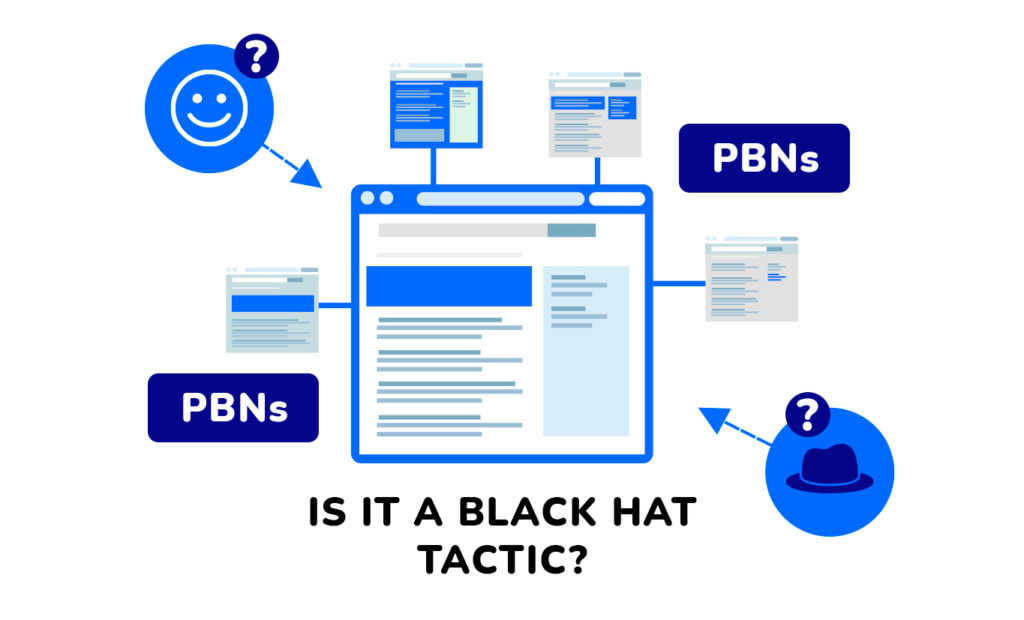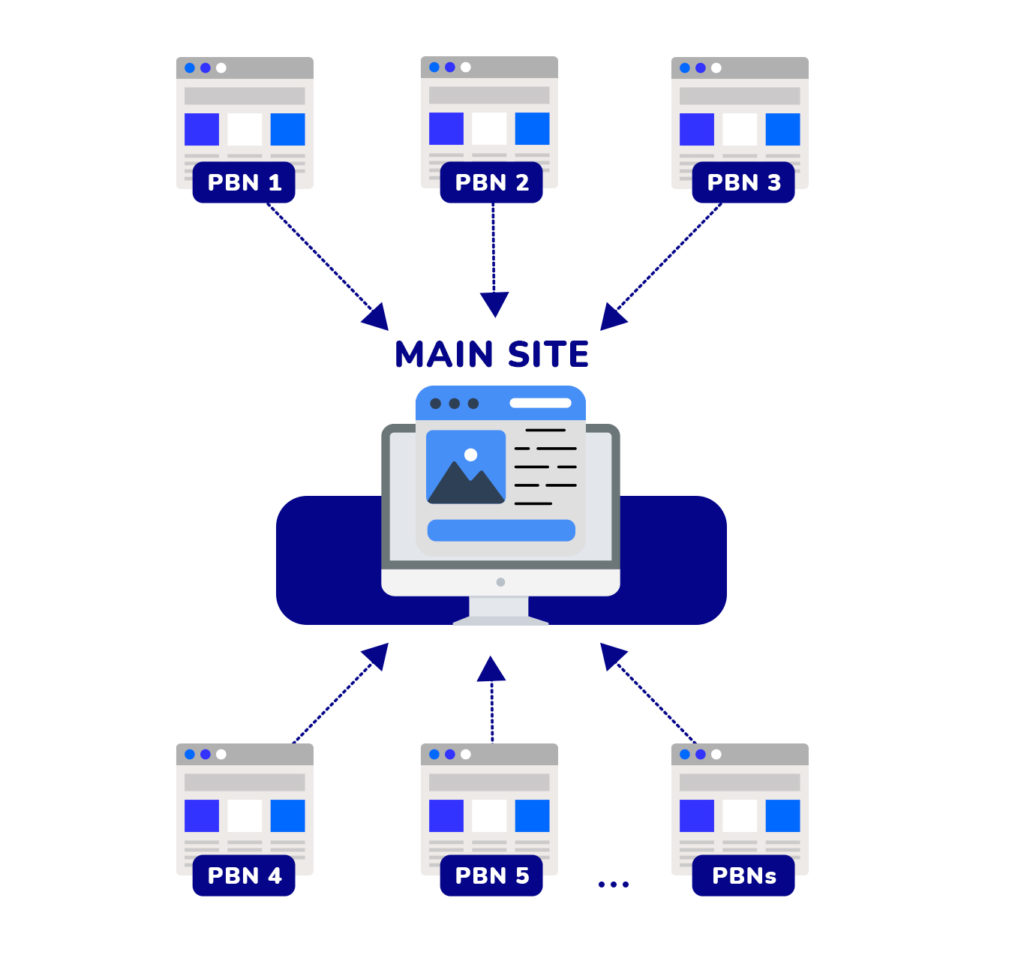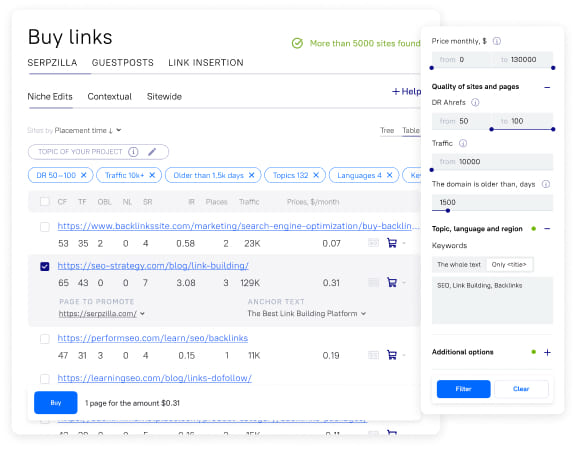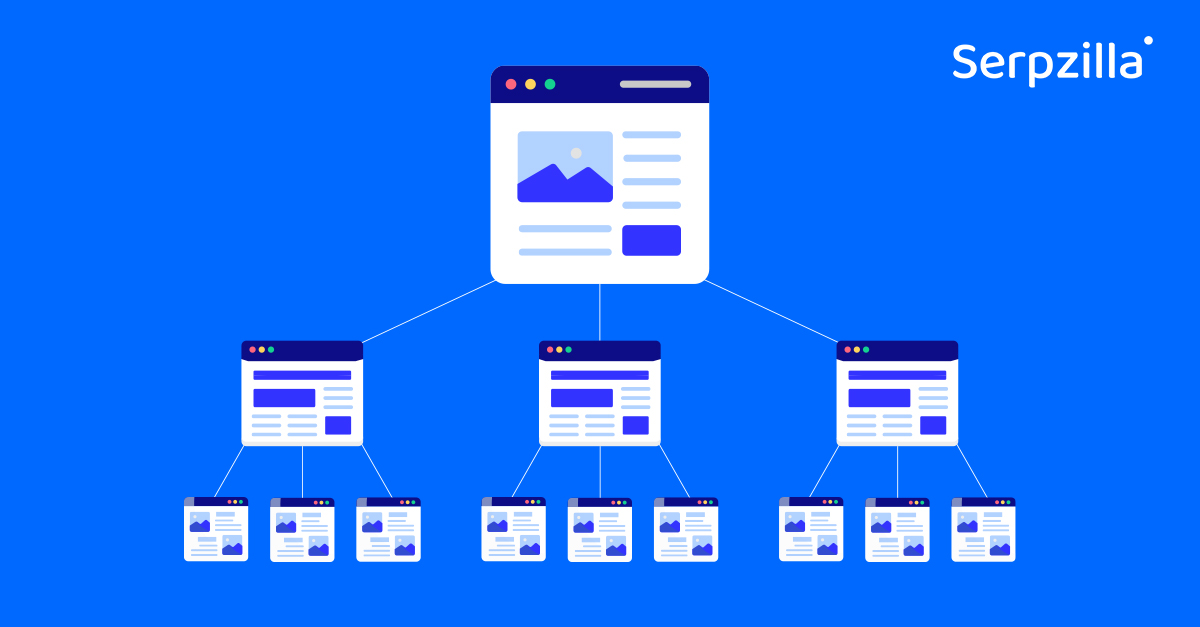The use of Private Blog Networks (PBNS) has continually established itself as a hotly debated topic within the world of SEO over a number of years. Whilst some hold them as the secret weapon easily boosting yourself in search engine ranking, others tend to steer clear due to the penalties that can follow. In this article, we fully explore PBNs in depth, shifting a focus on their role in overall link building strategies – what are the associated risks and rewards?
Understanding Private Blog Networks (PBNS)
From a foundational perspective, PBNs are clusters of sites that are carefully crafted to channel these backlinks to a primary site, thus artificially enhancing visibility with search engine providers (SERPS). These vast networks usually are made up of expired domains with prior authority, acquired through things such as past content and backlink profile diversity. By refreshing these domains with newer, fresher content, SEO experts can focus on harnessing and redirecting authority towards a targeted site.
A Historical Walkthrough
The thing to note is, PBNs emerged as a loophole in the SEO world, promising absolutely expedited improvement in SEO rankings. But what sold them? The unparalleled control that they offered over anchor text and backlinks – both pivotal factors in SEO success. However, as is the case with Google, algorithms changed and manipulative tactics were spotted out, hence the risk associated with using PBNs has increased indefinitely.
Understanding the Terrain
As with all Serpzilla articles, we’ve put specific focus on understanding both the pros and cons, risks versus rewards. By offering a more well-rounded view of PBNs from the contemporary SEO landscape, our aim remains to empower SEO growth through to utilization of PBNs in an SEO arsenal. Are PBNs really the shortcut to success, or a classic too-good-to-be-true path to danger and penalties? Let our Serpzilla experts dig in:

Understanding the Significance of PBNs in SEO Strategies
The use of Private Blog Networks tends to occupy a unique niche in the world of SEO. By fully delving into the anatomy and various functionalities of PBNs, SEO experts naturally gain a deeper picture into their role and influence within the broader world of SEO.
Can we demystify PBSNS, and What is Their Purpose?
At its core, A Private Blog Network is a vast collection of sites fully orchestrated to funnel all link equity towards only a single website, usually referred to as a the ‘money site’ – the objective here is to manipulative search engine rankings, Thus, the deeper essence of a PBN allows it to augment the authority of a money site through a well-balanced influx of high-quality links.
Building the Framework of PBNs
The full set up phase of a PBN requires a lengthy process the procurement of multiple domains with pre-existing authority, which can be done with Serpzilla, yet these domains must undergo transformation into legitimate sites capable authority directly to a target site via backlinks. Lastly, a critical perspective of PBN effectiveness in the balance of individual sites is the inter-balance of these singular sites within a wider network, which conceals their true objective.
Unravelling Link Equity Via PBNs
Link equity, which is often referred to as ‘link juice’, metaphorically epitomizes the value and clout moved from one site to another through hyperlinks. Thus, the strategic essence of employing a PBN directly lies in utilizing, orchestrating, and maximizing the flow off link equity towards a designated ‘money site’. Furthermore, each component site within the network is optimized to fully facilitate the transmission and transaction of link equity, which in theory boosts the money site’s statute in search engine results pages.
The Dichotomy of PBN Advantages and Risks
Whilst PBNs can offer an array of benefits, including a sense of control over a contextual environment utilizing backlinks, anchor text selecting, and the rhythm of backlink acquisition. However, these links do require somewhat meticulous management to fully evade detection by SERPs like Google. Thus, some level of expertise and a comprehensive grasp of the more complex mechanisms of PBNs is essential for individuals thinking about integrating their PBNs into their SEO game.
Comprehending the Art of Constructing and Supervising a PBN
Focusing on the journey of creating or independently overseeing a Private Blog Network (PBN) can demand particular attention to detail a more profound comprehension of SEO best practices, as aforementioned. Thus, successful management of a BN not only promotes its efficacy in enhancing your primary site’s SEO profile but could also mitigate the change of detection by search engine algorithms.
Significant Phases of PBN Establishment
The foundation of a PBN rests upon a sequence of pivotal steps, each demanding precision and foresight:
Domain Procurement: Understand the important of backlinks as a basis. Start off by acquiring domains already loaded with pre-existing authority, typically in the form of expired domains boasting historical backlinks relevant to your overall niche. Evaluation of domain value can be facilitated through well-used SEO tools like Ahrefs, or Moz, offering deeper insights into the domain’s backlink profile and past performance.
Hosting Contemplations: It is important to fend away any possible digital trails that may be susceptible to trouble by search engines – in this sense, it is imperative that each domain within your own PBN be hosted on separate servers, ideally across differing hosting providers. This strategy plays a key role in obscuring interconnection between high link value sites.
Content Curation: The importance of furnishing sites within the PBN with fresh, relevant, high-authority, premium, niche relevant content should not be overstated, not only can this facilitate the boosting of SEO benefits, but it also transcends the authenticity and legitimacy of your chosen sites. Ensuring uniqueness of content across your entire PBN is essential to circumvent issues that may arise from duplicate content.
Underlining the Imperative of Concealment
For seamless operation and evasion of Google’s measures, a PBN must escape detection as a shared network by search engines and competitors alike:
1. Private WHOIS Data: Preserving the confidentiality of WHOIS information or registering each domain under distinct identities aids in obscuring ownership trails.
2. Diverse Website Aesthetics: Each site should boast a unique design, layout, and navigation scheme. Employing a spectrum of CMS platforms and themes further amplifies the camouflage.
3. Strategic Link Deployment: Exercise discretion in the placement of links within the network. Not all sites should interlink indiscriminately, and links to the money site should be deployed judiciously to mimic natural linking patterns.
Efficient Management and Surveillance of a PBN
Tight oversight and systematic upkeep are indispensable for sustaining the vitality of a PBN:
1. Regular Maintenance: Consistent updates to content, themes, and plugins are essential to uphold the vitality and relevance of each site within the network.
2. Vigilant Backlink Monitoring: Leverage SEO tools to monitor the health and efficacy of backlinks diligently. Prompt rectification of deindexed sites or lost links is paramount to preserve the network’s integrity.
3. Risk Mitigation: Conduct periodic audits to unearth potential SEO footprints and vulnerabilities within the network’s architecture, preemptively fortifying against penalties.
Mastering the intricacies of constructing and administering a PBN is a complex mission requiring a profound comprehension of SEO intricacies and an unwavering commitment to continual upkeep. While PBNs wield considerable potential as pillars of an SEO strategy, their deployment necessitates circumspection to avert adverse penalties on your SEO endeavors.

Utilizing Link Building Strategies for PBNs
Maximizing the potential of Private Blog Networks (PBNs) for link building requires using strategic approaches to boost impact while mitigating risks. These strategies utilize fostering natural linking patterns, upholding content quality standards, and diversifying link types and their origins.
Fostering Natural Linking Patterns
Successful PBN link building rests on fostering natural linking patterns with the conspicuous markers that may trigger scrutiny from search engines:
1. No Over-Optimization: Variety is key when it comes to anchor text. Strive to maintain a balanced mix of branded, generic, and keyword-rich anchor texts to emulate organic linking behavior.
2. Well-Thought-Out Link Placement: Focus on embedding links seamlessly within content to resonate organically with readers. Links should seamlessly integrate into the context of the content, delivering genuine value to users and bolstering the perceived legitimacy of the link.
3. Strategic Link Distribution: Focus on restraint in linking to a target site, avoiding excessive linking from every page or post within the PBN. Strategic placement of links creates a random and natural linking pattern, aligning with organic linking behaviors.
Focusing on Content Quality
The foundation of PBN effectiveness lies in the quality of content pushed across the network, serving dual purposes of SEO optimization and network sustainability:
1. Relevance and Value: Content published on PBN sites must resonate with the site’s thematic focus, delivering tangible value to its audience. Aligning content with the site’s theme enhances the credibility of the content and the links embedded within
2. Unique and Compelling Content: Remain far away from clear of duplicate content across the network. Each site should host unique, meticulously crafted articles designed to captivate readers and foster organic traffic and engagement.
Diversifying Link Sources
To boost the resilience of your link profile and protect the main site from potential SEO penalties, diversify the sources of links within the PBN:
1. Varying Domain Authorities: Incorporate sites boasting a spectrum of domain authorities within your PBN. This diversity fosters a natural backlink profile, enhancing the credibility and resilience of the network.
2. Incorporating Diverse Content Formats: Positively use an array of content formats, spanning blog posts, articles, infographics, and videos for link placement. Catering to diverse user preferences bolsters user engagement and supports a multifaceted SEO strategy.
3. Integration of External Links: While the main function of a PBN is to acquire and balance links from controlled domains, integrating external links from sources beyond the network lends further validation to the backlink profile, reinforcing its authenticity for SERPS.
These carefully crafted strategies serve as basic steps for harnessing the full potential of PBNs in link building endeavors, safeguarding against potential pitfalls, and maximizing SEO efficacy.
Navigating Risks and Exploring Alternatives to PBNs
WARNING: Utilizing Private Blog Networks (PBNs) for link building presents significant risks of detection and penalization by search engines, potentially compromising a site’s visibility and reputation. These risks exemplify the importance of adopting alternative strategies aligned with white-hat SEO practices.
Quality content creation remains a basic necessity of successful web pages, fostering organic backlinks through valuable, engaging, niche relevant content. Guest Posting on reputable industry sites and active social media engagement can also serve to amplify brand visibility and attract natural link generation. Think about digital PR tactics also, including Press Releases and proactive Brand Mentions, offer avenues for earning authoritative backlinks from places such as online news outlets and relevant blogs.
Focusing on community Engagement, through participation in forums and hosting educational webinars, establishes thought leadership and encourages organic link referrals. Additionally, submissions to reputable industry directories provide credible link opportunities while boosting business prospects.
Incorporating these alternative strategies not only aligns with search engine guidelines but also fosters sustainable growth in search rankings and cultivates a positive online reputation, steering clear of the risks associated with PBN usage.
Boost your SEO results! Link building has become fast and easy with Serpzilla. Buy quality backlinks on authority websites with high DR.

Towards a Path of Sustainable Growth?
In the world of SEO, for digital experts, balance is key. Whilst PBNs (Private Blog Networks) offer a level of allure, their risks are clear and palpable. Instead, focus on pivoting towards strategies rooted in things like quality content, social media engagement, traditional digital PR strategies, and community collaboration. By embracing these methods, we not only mitigate risks but also foster genuine connections and sustainable growth. Let’s navigate the digital world with prudence and purpose, building a future founded on authenticity and lasting impact.







